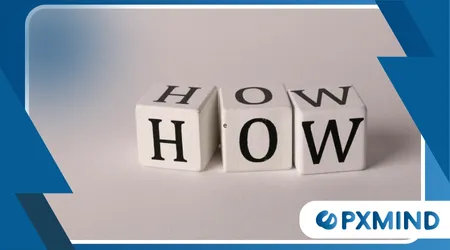Come imparare in modo più intelligente, non più difficile

Come imparare in modo più intelligente, non più difficilePer anni ci è stato detto che il successo deriva dal puro impegno.
Annunci
Ma se il segreto non fosse lavorare di più, ma pensare in modo diverso?
Non si tratta di scorciatoie; si tratta di efficienza e di comprendere il vero potenziale del tuo cervello. Per padroneggiare davvero un'abilità o una materia, hai bisogno di un nuovo approccio.
Il mito dell'apprendimento tramite forza bruta
Ci siamo passati tutti, impegnati a studiare per un esame o a trascorrere ore infinite in biblioteca. Questo metodo, apparentemente produttivo, è spesso controproducente.
È come cercare di riempire una vasca da bagno con un tubo che perde. Potresti fare progressi, ma una parte significativa dei tuoi sforzi andrà sprecata.
Il nostro cervello non è un processore lineare; prospera grazie a connessioni, contesto e novità. Senza questi, le nuove informazioni faticano a fissarsi.
Il problema non è la mancanza di disciplina, ma la mancanza di strategia. Un errore comune è la revisione passiva, come limitarsi a rileggere gli appunti o a evidenziare il testo.
Questo crea un falso senso di familiarità, inducendo il cervello a credere di aver padroneggiato la materia. È qui che la maggior parte degli studenti fallisce.
Invece di questo vecchio approccio, dobbiamo adottare un coinvolgimento attivo. L'obiettivo è costruire una rete di conoscenze solida e interconnessa.
Imparare significa costruire un'impalcatura mentale, non accatastare mattoni in una pila disorganizzata.
Il potere del richiamo attivo e della ripetizione dilazionata
Analizziamo ora due delle tecniche più efficaci. Richiamo attivo è la pratica di recuperare informazioni dalla memoria senza guardare gli appunti.
Questo rafforza i percorsi neurali. È la differenza tra guardare una mappa e disegnarne una a memoria. È nell'atto del disegnare che avviene il vero apprendimento.
Un esempio pratico è l'uso delle flashcard. Invece di limitarti a ripassarle, dovresti cercare di ricordare la risposta prima di girarle.
Un altro esempio è cercare di spiegare un concetto a qualcun altro senza fare riferimento ad alcun materiale. Questo costringe il cervello a recuperare e organizzare le informazioni.
Ripetizione distanziata è la deliberata distribuzione delle sessioni di revisione su intervalli crescenti.
Leggi qui: Il ruolo del sonno nell'apprendimento e nelle prestazioni cerebrali
La memoria svanisce naturalmente con il tempo; rivisitare un concetto al momento giusto rafforza la memoria.
Ciò contrasta la curva dell'oblio, un concetto descritto per la prima volta da Hermann Ebbinghaus alla fine del XIX secolo.
La sua ricerca dimostra che dimentichiamo molto rapidamente una notevole quantità di nuove informazioni se non vengono rafforzate.
Un modo semplice per applicare questo principio è ripassare le nuove informazioni il giorno dopo averle apprese, poi tre giorni dopo, poi una settimana dopo e così via.
Questa pianificazione intelligente rafforza la memoria quando è più vulnerabile.

L'arte dell'interlacciamento e dell'apprendimento contestuale
Oltre al richiamo e alla ripetizione, dobbiamo considerare il modo in cui strutturiamo la nostra pratica. Interlacciamento consiste nel mescolare argomenti o materie diverse durante una sessione di studio.
Invece di studiare una sola materia, come matematica, per due ore, potresti alternare matematica, storia e scienze. All'inizio, questo potrebbe sembrare meno efficiente.
Guarda quanto è interessante: Il legame tra nutrizione e salute mentale
Tuttavia, la ricerca suggerisce che questo approccio aiuta il cervello a distinguere meglio i concetti, costringendo la mente a creare connessioni e contrasti.
Si tratta di un metodo efficace per sviluppare capacità flessibili di problem-solving.
Come imparare in modo più intelligente, non più difficile spesso implica tecniche che sembrano controintuitive. La sfida è superare quel disagio iniziale.
Prendiamo un giocatore di basket. Non si allena su un solo tipo di tiro per un'intera sessione. Mescola tiri liberi, layup e tiri da tre punti.
Questa variabilità li prepara alla natura imprevedibile di un gioco reale. Allo stesso modo, l'interleaving prepara la mente alla complessità dei problemi del mondo reale.
Il ruolo della metacognizione e della mentalità: come imparare in modo più intelligente, non più difficile
L'ultimo pezzo di questo puzzle è metacognizioneSi tratta semplicemente di pensare al proprio modo di pensare. Si tratta di essere consapevoli del proprio processo di apprendimento.
Si tratta di porsi domande come: "Ho capito davvero questo concetto?" e "Qual è il modo più efficace per impararlo?". È una forma di autoregolamentazione.
Guarda qui: Il legame tra movimento e concentrazione mentale
Altrettanto fondamentale è la tua mentalità. Affrontare l'apprendimento con una mentalità di crescita, credendo che le tue capacità possano essere sviluppate attraverso la dedizione e il duro lavoro, è trasformativo.
L'opposto, una mentalità fissa, sostiene che la tua intelligenza è statica.
Uno studio del 2017 condotto dai ricercatori della Stanford University ha scoperto che gli studenti con una mentalità di crescita hanno mostrato una maggiore resilienza accademica e hanno ottenuto voti migliori.

Questa tabella riassume le principali distinzioni negli approcci di apprendimento:
| Apprendimento tramite forza bruta | Apprendimento intelligente |
| Rileggendo gli appunti | Richiamo attivo |
| Studiare a fondo | Ripetizione distanziata |
| Pratica bloccata (un argomento alla volta) | Interlacciamento |
| Revisione passiva | Coinvolgimento attivo |
| Mentalità fissa | Mentalità di crescita |
Una nuova era di apprendimento
Imparare non significa punirsi con lunghe ore di studio. Si tratta di lavorare con il cervello, non contro di esso.
Adottando il richiamo attivo, la ripetizione dilazionata, l'interlacciamento e la metacognizione, puoi trasformare la tua esperienza di apprendimento.
Si tratta di un passaggio dal modello tradizionale e rigido a uno più flessibile e potente.
Questo nuovo percorso punta sulla qualità piuttosto che sulla quantità. Si tratta di costruire una conoscenza duratura, non solo una memoria a breve termine.
Si tratta di un passaggio dall'essere un destinatario passivo a un creatore attivo della propria conoscenza. Come imparare in modo più intelligente, non più difficile è un nuovo paradigma.
Allora, siete pronti a smettere di nuotare controcorrente e iniziare a navigare nelle correnti della vostra mente? Gli strumenti sono disponibili e le prove sono evidenti.
La chiave per liberare il tuo vero potenziale risiede in un approccio strategico e intelligente.
Non si tratta solo di voti; si tratta di diventare pensatori più efficaci e adattabili in tutti gli aspetti della vita. È giunto il momento di smettere di memorizzare e iniziare a capire.
Domande frequenti: come imparare in modo più intelligente, non più difficile
Cosa succede se ho la sensazione di non imparare quando utilizzo questi metodi?
Si tratta di una sensazione comune, poiché queste tecniche possono risultare più impegnative all'inizio.
L'impegno profuso durante il richiamo attivo o l'interleaving è ciò che costruisce ricordi più forti e duraturi. Fidati del processo e concentrati sui benefici a lungo termine.
Queste tecniche funzionano per tutte le materie?
Sì, sono molto efficaci in un'ampia gamma di materie, dalla matematica e scienze alla storia e alle lingue.
I principi fondamentali si applicano a qualsiasi ambito in cui sia necessario creare e conservare un complesso corpus di conoscenze.
Come posso integrare tutto questo nella mia routine di studio attuale?
Inizia in piccolo. Prova a usare il richiamo attivo per 15 minuti alla fine di una sessione di studio.
Oppure, se prevedi di studiare due materie, prova ad alternarle ogni 30 minuti. Gradualmente, queste pratiche diventeranno parte integrante della tua routine.
++ I 20 migliori consigli per studiare in modo più intelligente, non più faticoso
